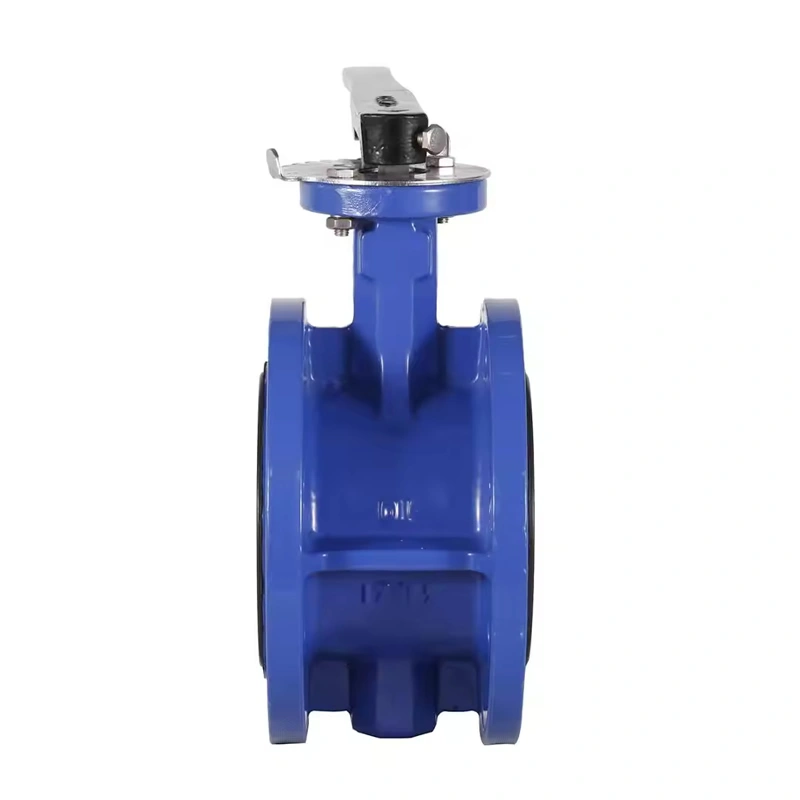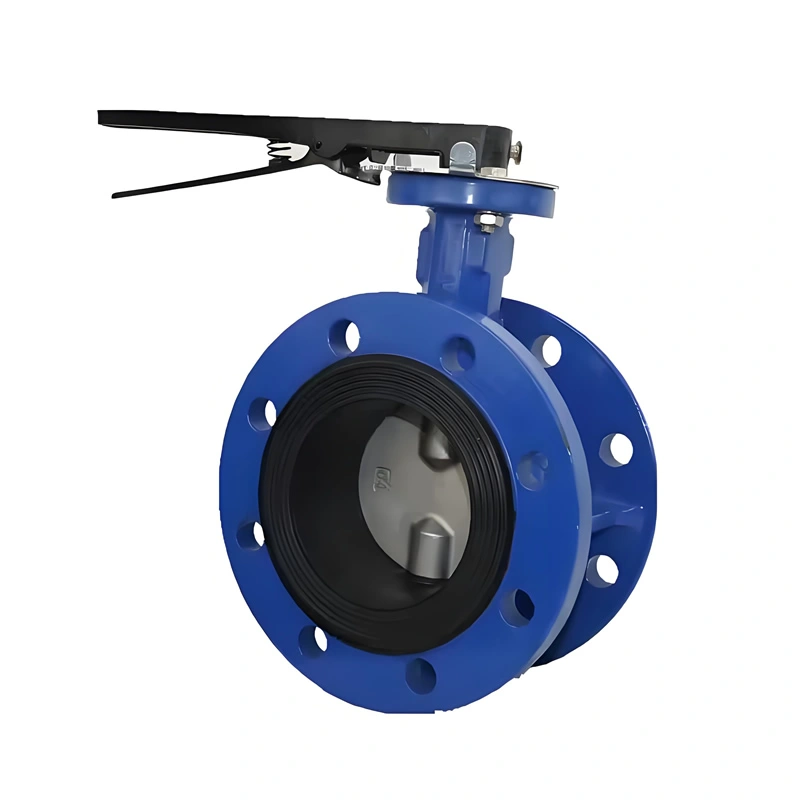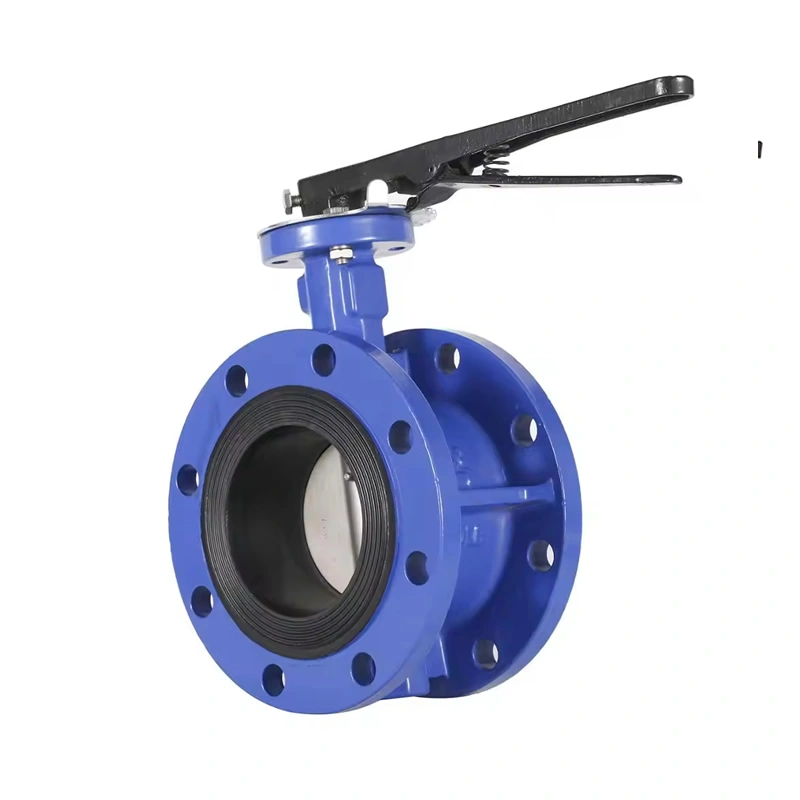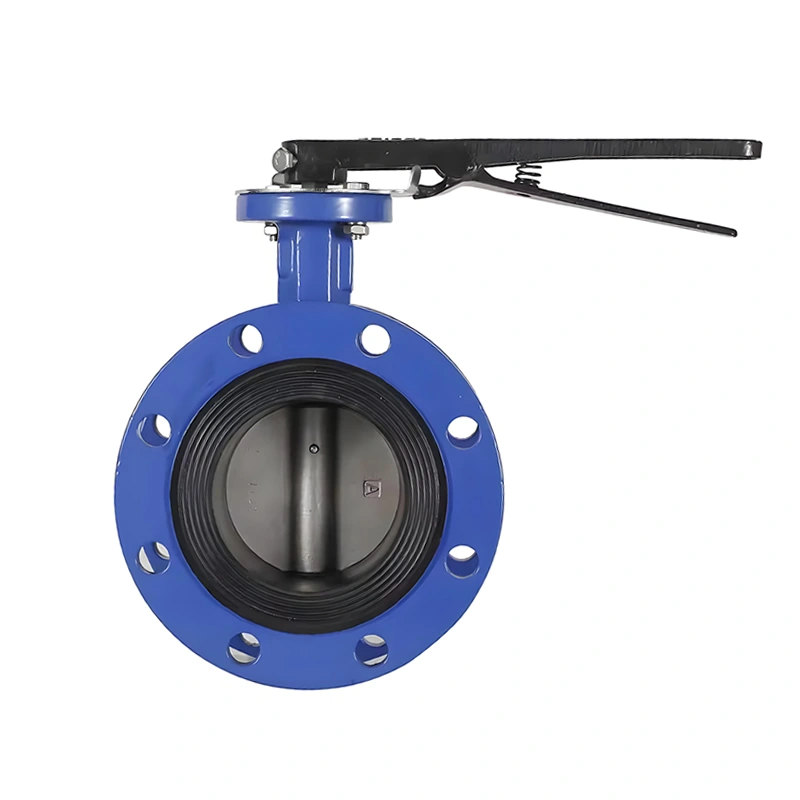- DN50-DN1200
- BUTTERFLY
- General
- Manual
- Low Temperature
- Water
- Ductile Iron
- Normal Colse
Specification
Newway Double Flanged Gear Operated Concentric Butterfly Valve: An Efficient Solution for Industrial Fluid Control
I. Product Technical Positioning and Core Parameters
The Newway double flanged gear operated concentric butterfly valve is specially designed for medium-high pressure fluid control, covering nominal diameters from DN50 to DN2000 (2″ to 80″) and suitable for pressure classes PN10/PN16 (1.0/1.6MPa). Its core structure adopts a concentric central line design (with the stem, disc, and pipeline axis coaxial), combined with double flanged connections (complying with standards like EN 1092 and ASME B16.5) to ensure seamless integration with pipeline systems. Driven by a worm gearbox, it supports manual operation or integration with electric/pneumatic actuators, suitable for media such as water, air, and oil within the temperature range of -20°C to 120°C.
II. Analysis of Core Technical Features
(A) Advantages of Concentric Structure and Double Flanged Design
Low-Resistance Efficient Flow Path:
The concentric layout keeps the disc parallel to the fluid direction when fully open, with the flow resistance coefficient Cv increased by 20% (pressure loss of DN300 valve ≤0.3m water column), especially suitable for large-flow scenarios (e.g., urban water transmission main lines).
Reliability of Double Flanged Connection:
The flanges at both ends of the valve body are directly fixed to the pipeline by bolts. Compared with wafer-type structures, they can withstand higher axial stress, avoiding displacement risks in vibration environments (e.g., pump inlets/outlets, compressed air pipelines).
90° Precise On-Off Control:
The gearbox drive ensures an on-off angle error ≤1°, combined with a mechanical limit device to achieve zero over-travel and visualized status (handle position corresponds to the opening degree), reducing the risk of misoperation.
(B) Sealing System and Material Science
Breakthrough in Soft Sealing Technology:
Sealing Materials: Standard configurations include EPDM rubber (complying with WRAS drinking water certification), NBR nitrile rubber (oil-resistant), or PTFE polytetrafluoroethylene (corrosion-resistant), passing bi-directional bubble-tight zero-leakage tests (EN12266 Class A standard).
Lifespan and Maintenance: The valve seat is fixed by a dovetail groove or pressure ring, supporting online replacement without pipeline disassembly, reducing maintenance costs by 35%.
Valve Body Material Combination:
Main Materials: WCB cast steel (compressive strength ≥485MPa), ductile iron (QT450-10, elongation ≥10%), or 304 stainless steel (CF8, corrosion resistance increased by 3 times).
Surface Treatment: The inner cavity and outer surface are coated with epoxy resin powder (thickness ≥200μm), passing salt spray tests (GB/T 10125, ≥1000 hours without corrosion), suitable for harsh environments like humidity and sewage.
(C) Analysis of Gear Drive System
Torque Transmission Optimization:
Worm Gear Design: The reduction ratio is typically 1:20 to 1:50, with output torque reaching 27-9768 N·m (adjusted by diameter). The manual operation torque of DN200 valve ≤80N·m, enabling easy on-off by a single person.
Self-Locking Function: The worm’s lead angle is smaller than the friction angle, ensuring the valve locks in any position to avoid accidental opening caused by medium pressure.
Mechanical Durability:
Shaft System Strengthening: The stem uses 2Cr13 stainless steel with surface nitriding treatment (hardness HV≥700), combined with copper alloy bearings, capable of withstanding over 100,000 opening-closing cycles.
Anti-Leakage Design: The stem seal adopts V-type PTFE packing + O-ring double protection, passing 1.5 times the nominal pressure test to ensure no external leakage during long-term operation.
III. Key Technical Parameters and Certifications
|
Parameter Category |
Technical Indicators |
Expansion Options |
|
Nominal Diameter |
DN50-DN2000 |
Custom DN2200+ (requires engineering evaluation) |
|
Pressure Class |
PN10/PN16 |
Upgraded to PN25/PN40 |
|
Body Material |
WCB cast steel/ductile iron/304 stainless steel |
316L stainless steel, duplex steel 2205 (corrosion-resistant scenarios) |
|
Actuation Mode |
Manual gearbox/electric/pneumatic |
Explosion-proof electric (Ex d IIC T6), hydraulic drive |
|
Sealing Standard |
EN12266 Class A (zero leakage) |
API 607 fire certification (metal seal redundancy design) |
|
Testing Standard |
API 598 (1.5x shell hydrostatic/1.1x sealing test) |
Low-temperature test (-40℃, material upgraded to 304L) |
|
Certification System |
CE-PED, ISO 9001, WRAS (drinking water) |
LR/DNV-GL classification, EAC (Russia) |
Product Overview
IV. Manufacturing Processes and Quality Control
(A) Precision Processing Flow
Valve Body Casting and Treatment:
WCB cast steel uses resin sand casting, followed by normalizing + tempering treatment to eliminate stress. The internal flow path is precisely milled by a CNC machining center with a roughness of Ra≤6.3μm.
Stainless steel valve bodies use lost-wax casting with pickling and passivation to ensure corrosion resistance.
Disc and Stem Assembly:
The disc passes dynamic balance testing (residual unbalance ≤10g·cm). The stem and disc are connected by involute splines (fit tolerance H7/g6) to prevent axial movement.
Sealing System Testing:
Each valve must pass 1.5 times nominal pressure shell testing (30-minute hold without deformation) and 1.1 times sealing testing (helium leakage detection, leakage rate ≤5×10⁻⁸m³/s).
Sampling for 100,000 opening-closing life tests with a sealing performance retention rate ≥95%.
(B) Quality Traceability and Certification
Material Traceability: All castings come with heat lot numbers and chemical composition reports, supporting third-party PMI testing; stainless steel materials provide intergranular corrosion test reports (ASTM A262 E method).
System Certifications: Passed ISO 9001 quality management, ISO 14001 environmental management, and OHSAS 18001 occupational health certifications. Export products comply with the EU CE-PED directive.
After-Sales Guarantee: Commit to a 12-month warranty period, providing free replacement for leakage caused by seal failure.




